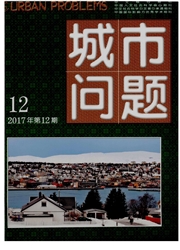

 中文摘要:
中文摘要:
改革开放以来,中国城市化进程显著加快,因城镇人口规模扩大与中心城镇发展空间需求增长,城乡行政区格局随之发生变化。这种变化以城镇型行政区替代传统地域型行政区为特征,却又表现出政区类型转型的多元化特征。引起这种变化的根本原因是地方权益关系的重组,以适应城镇化、新型工业化为主导的现代化发展需求。变化导致一批特大型乡镇的崛起,出现类似于"市域经济与县域经济"博弈矛盾的"县域经济与乡镇经济"博弈新形式,由此表现出"扩权强县、扩权强镇、强县不能弱市"等错综复杂的地方权益博弈新格局。这种格局还呈现出明显的地域差异特征,凸显了大国地方治理的复杂性与多样性。
 英文摘要:
英文摘要:
China has stepped into the stage of rapid urbanization since 2000.The territory pattern of urban and rural administrative regions is changing with the expansion of urban population and the growth of central towns' demands for spatial resource development.The change is characterized by spatial organization based on urban and rural administrative regions instead of traditional geographical regions.And the diversity of the transition of administrative regions is another characteristic of this change.The reorganization of local interests is the cause of this change,which purpose is to adapt to the modern development needs of urbanization and new industrialization.The change leads to the rise of a number of large towns.And a new form of contradictory game,County Economy vs.Town Economy,which is like City Economy vs.County Economy,is rising.Consequently,a new complicated pattern of local rights and interests has emerged,which is "expanding county rights,expanding town rights,strengthening the county without city attenuation." This pattern also shows significant geographical differences,which highlights the complexity and diversity of local governance in a large country.
 同期刊论文项目
同期刊论文项目
 同项目期刊论文
同项目期刊论文
 期刊信息
期刊信息
